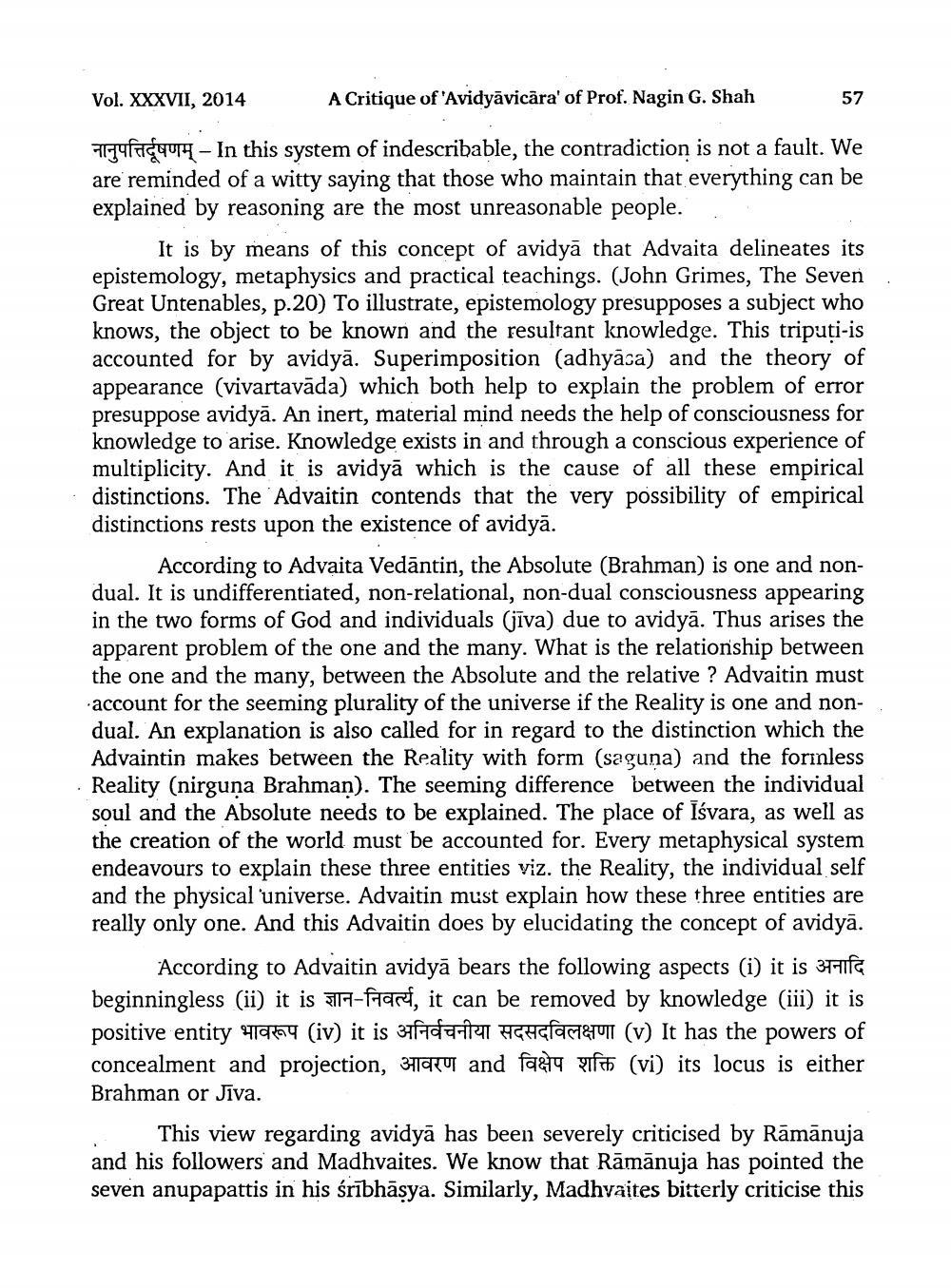________________
Vol. XXXVII, 2014
A Critique of 'Avidyāvicāra' of Prof. Nagin G. Shah
57
Hayfaqqu14 - In this system of indescribable, the contradiction is not a fault. We are reminded of a witty saying that those who maintain that everything can be explained by reasoning are the most unreasonable people..
It is by means of this concept of avidyā that Advaita delineates its epistemology, metaphysics and practical teachings. (John Grimes, The Seven Great Untenables, p.20) To illustrate, epistemology presupposes a subject who knows, the object to be known and the resultant knowledge. This tripuți-is accounted for by avidyā. Superimposition (adhyāsa) and the theory of appearance (vivartavāda) which both help to explain the problem of error presuppose avidyā. An inert, material mind needs the help of consciousness for knowledge to arise. Knowledge exists in and through a conscious experience of multiplicity. And it is avidyā which is the cause of all these empirical distinctions. The 'Advaitin contends that the very possibility of empirical distinctions rests upon the existence of avidyā.
According to Advaita Vedāntin, the Absolute (Brahman) is one and nondual. It is undifferentiated, non-relational, non-dual consciousness appearing in the two forms of God and individuals (jiva) due to avidyā. Thus arises the apparent problem of the one and the many. What is the relationship between the one and the many, between the Absolute and the relative ? Advaitin must account for the seeming plurality of the universe if the Reality is one and nondual. An explanation is also called for in regard to the distinction which the
Advaintin makes between the Reality with form (saguna) and the forinless · Reality (nirguna Brahman). The seeming difference between the individual
soul and the Absolute needs to be explained. The place of Isvara, as well as the creation of the world must be accounted for. Every metaphysical system endeavours to explain these three entities viz. the Reality, the individual self and the physical universe. Advaitin must explain how these three entities are really only one. And this Advaitin does by elucidating the concept of avidyā.
According to Advaitin avidyā bears the following aspects (i) it is 3471fa beginningless (ii) it is 1-ffard, it can be removed by knowledge (iii) it is positive entity भावरूप (iv) it is अनिर्वचनीया सदसदविलक्षणा (v) It has the powers of concealment and projection, आवरण and विक्षेप शक्ति (vi) its locus is either Brahman or Jiva. .: This view regarding avidyā has been severely criticised by Rāmānuja and his followers and Madhvaites. We know that Rāmānuja has pointe seven anupapattis in his śrībhāsya. Similarly, Madhvaites bitterly criticise this




